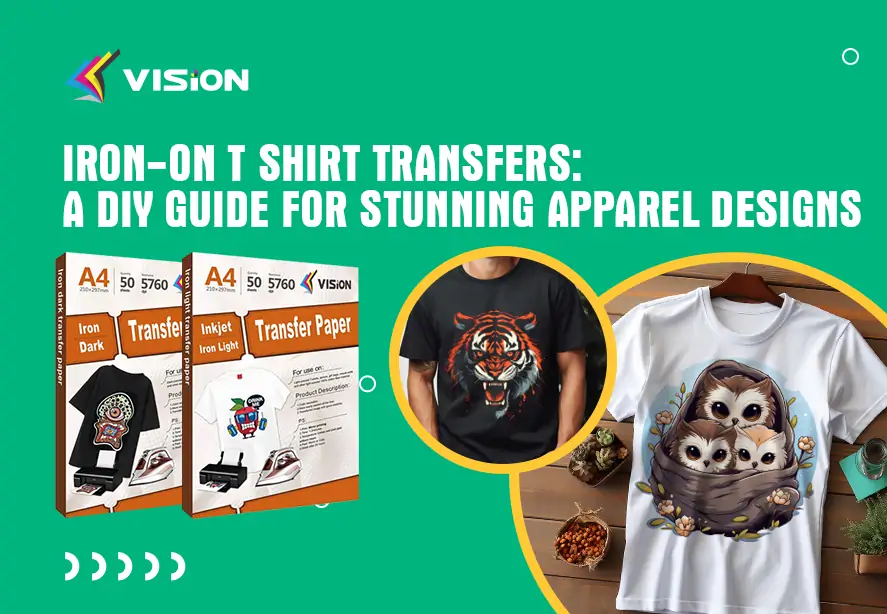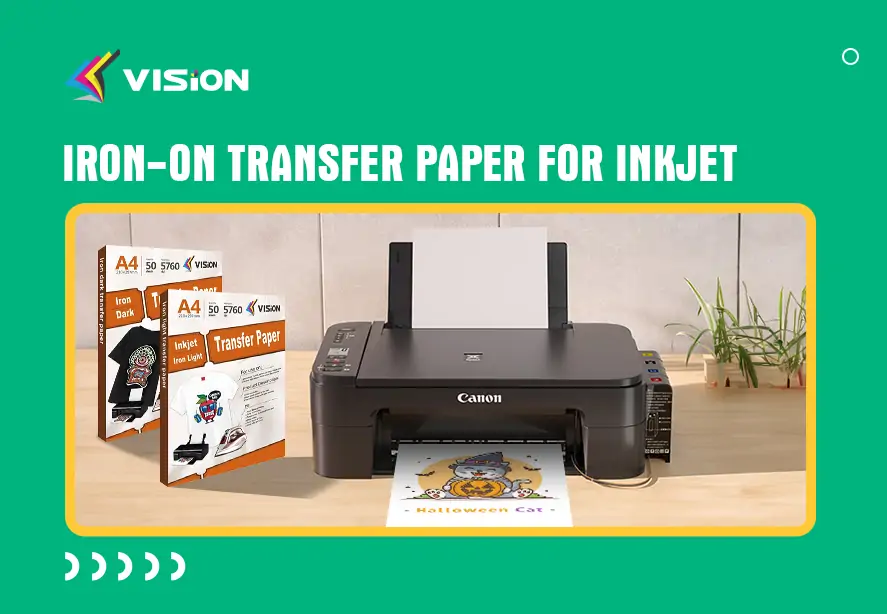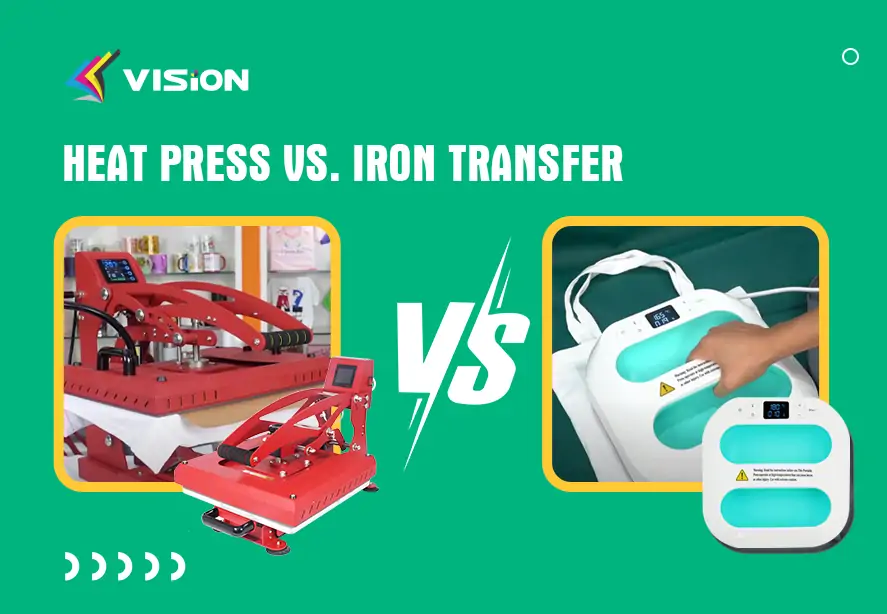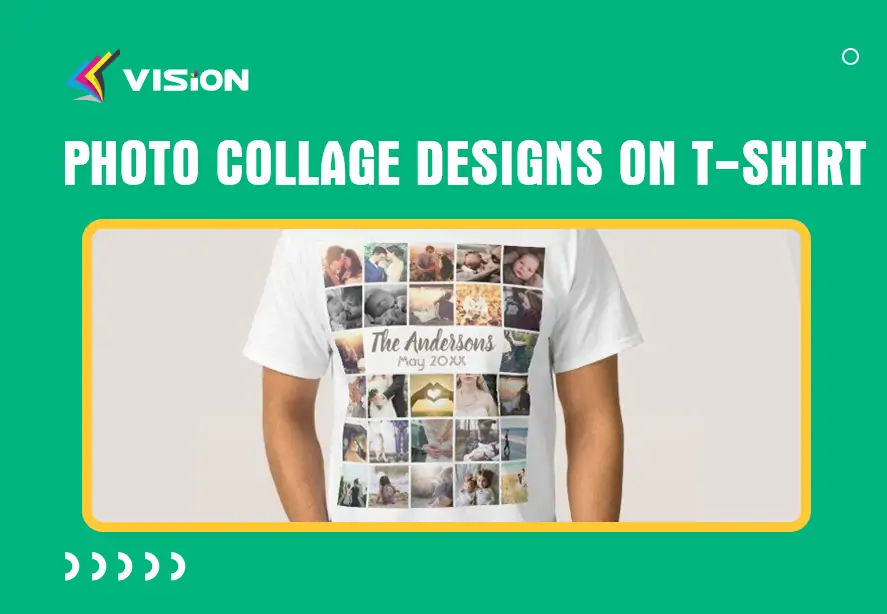Iron-On T Shirt Transfers: DIY Guide for Stunning Designs

Introduction to Iron-On Transfers
Iron-on transfers have revolutionized the world of DIY apparel design, allowing individuals to create unique and personalized designs on t-shirts and other garments. Whether you’re a creative hobbyist or a small business owner, mastering the art of iron-on transfers can open up a world of possibilities for stunning apparel designs. In this comprehensive guide, we will take you through every step of the process, from choosing the right transfer paper to troubleshooting common issues and exploring advanced techniques. Get ready to unleash your creativity and transform plain t-shirts into wearable works of art!
Choosing the Right Transfer Paper
The success of your iron-on transfer project heavily relies on selecting the right transfer paper. There are various options available in the market, each with its own unique characteristics. Here are some key factors to consider when choosing transfer paper:
Compatibility: Ensure that the transfer paper you choose is compatible with your printer type (inkjet or laser) as well as the fabric you’ll be transferring the design onto.
Quality: Look for transfer papers that offer vibrant colors, sharp image clarity, and durability after washing.
Light vs. Dark Fabric Transfers: Keep in mind that there are different types of transfer paper specifically designed for light or dark fabrics. Light fabric transfers have a transparent background, while dark fabric transfers have an opaque white background to ensure that the design stands out.
Stretchability: If you’re working with stretchable fabrics like spandex or jersey, opt for transfer paper that provides good stretchability without cracking or peeling.
Preparing Your Design: Tips and Tricks
Before you start the transfer process, it’s essential to prepare your design properly to ensure a flawless result. Here are some tips and tricks to consider:
Design Software: Use graphic design software like Adobe Photoshop or Illustrator to create or edit your design. Make sure the design is in a high-resolution format for optimal printing results.
Mirror Image: Flip your design horizontally before printing since iron-on transfers are applied in reverse.
Test Print: Always do a test print on regular paper to check the colors, size, and placement of the design before printing on the transfer paper.
Cutting: If your design has intricate details or background areas that you don’t want to transfer, use scissors or a craft knife to carefully cut them out.
Heat Press vs. Iron: Pros and Cons
When it comes to applying iron-on transfers, you have two main options: a heat press or a household iron. Here are the pros and cons of each:
Heat Press:
Pros: Provides consistent heat and pressure, ensuring even transfer; ideal for large-scale projects; allows for precise temperature and time control.
Cons: Expensive; takes up space; not portable.
Iron:
Pros: Affordable and readily available; suitable for small-scale projects; portable.
Cons: Inconsistent heat and pressure; limited temperature control; can be challenging to achieve even transfer.
Consider your budget, project size, and level of precision when choosing between a heat press and an iron. Both options can yield great results when used correctly.
Related:
The Difference Between Iron-On Transfer Paper and Heat Transfer Paper
Step-by-Step Transfer Process
Now that you have your design ready and your equipment in hand, let’s dive into the step-by-step transfer process:
Preheat: Set your heat press or iron to the recommended temperature for the transfer paper and fabric.
Position: Place the garment on a flat, heat-resistant surface and position the transfer paper with the design facing down onto the fabric.
Apply Pressure: For a heat press, close the press and apply firm pressure for the recommended time. If using an iron, press down firmly and move the iron in a circular motion, applying even pressure.
Cool Down: Allow the transfer to cool down completely before peeling off the backing paper. This ensures that the design adheres properly to the fabric.
Peel and Enjoy: Gently peel off the backing paper, starting from one corner. Admire your newly transformed t-shirt with its stunning iron-on design!
How To Use VISION Transfer Paper With One Iron?
Troubleshooting Common Transfer Issues
Even with careful preparation and execution, you may occasionally encounter some common transfer issues. Here are a few troubleshooting tips for such situations:
Fading Colors: Ensure that you’re using high-quality transfer paper and that your printer is properly calibrated. Also, follow the washing instructions provided by the transfer paper manufacturer.
Design Not Transferring Completely: Check that you’re applying enough pressure during the transfer process. If using an iron, make sure you’re using the correct temperature and applying even pressure.
Peeling or Cracking Design: Ensure that the fabric is suitable for iron-on transfers and that you’re using the correct transfer paper for the fabric type. Follow the recommended temperature and time guidelines for your specific transfer paper.
Innovative Design Ideas for T-Shirts
Now that you have mastered the basics of iron-on transfers,let’s explore some innovative design ideas that will take your t-shirt creations to the next level:
Mixed Media: Combine iron-on transfers with other creative techniques like fabric paint, embroidery, or sequins to add texture and dimension to your designs.
Layered Designs: Create multi-layered designs by using different transfer papers and applying them one on top of the other. This technique adds depth and complexity to your artwork.
Typography: Experiment with different fonts, sizes, and styles to create eye-catching typography designs. Play with word placement, spacing, and alignment for a unique look.
Photo Collage: Use iron-on transfers to create a photo collage on your t-shirt. Print several small photos on separate transfer papers and arrange them in a visually appealing way.
Geometric Patterns: Explore geometric shapes and patterns to create modern and abstract designs. Combine different shapes and colors to achieve a visually striking result.
Nature-Inspired Designs: Draw inspiration from nature and incorporate elements like flowers, leaves, animals, or landscapes into your designs. Use vibrant colors to bring your designs to life.
Pop Culture References: Show your love for your favorite movies, TV shows, music, or books by incorporating iconic symbols or quotes into your designs. This is a great way to connect with like-minded individuals.
Remember, the only limit is your imagination! Don’t be afraid to experiment and create designs that truly reflect your personality and style.
Caring for Iron-On Transfer Designs
To ensure the longevity of your iron-on transfer designs, proper care is crucial. Here are some tips for caring for your iron-on transfer garments:
Washing: Turn the garment inside out before washing to protect the design. Use a gentle cycle and cold water to minimize fading. Avoid using bleach or harsh detergents.
Drying: Air-drying is the best option for preserving the design’s vibrancy and integrity. If using a dryer, use a low heat setting or tumble dry on delicate.
Ironing: When ironing the garment, avoid placing the iron directly on the design. Instead, iron the garment inside out or use a pressing cloth to protect the design.
Storage: Store your iron-on transfer garments folded or hung to avoid creasing or distortion of the design. Keep them away from direct sunlight to prevent fading.
By following these care instructions, you can enjoy your iron-on transfer designs for a long time, ensuring that they remain vibrant and eye-catching.
Conclusion
Mastering the art of iron-on transfers opens up a world of creative possibilities for stunning apparel designs. With the right transfer paper, proper preparation, and careful execution, you can transform plain t-shirts into wearable works of art. Experiment with different techniques, explore innovative design ideas, and don’t be afraid to let your creativity shine. Whether you’re creating personalized gifts, starting a small business, or simply expressing your unique style, iron-on transfers are a fantastic way to make a statement with your clothing.






